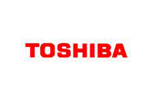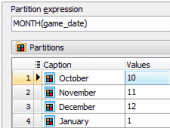Subscribe to our news:

 Partners
 Testimonials
Grey: "We're a two-person company, it's just me an my wife. I'm the technical guru, and she handles the business operations. I have to know a lot about MySQL, but that's much too technical for her. I have frequently had to setup CGI scripts (I code in Perl) so she can manage some of our tables (suppliers, manufacturers, etc).
I discovered PHP Generator a couple of days ago, tried the free version,and within a few hours I had purchased the Pro version (as well as SQL Maestro for MySQL).
Today I am completing the conversion of the last of my custom table managers to PHP Generator. This is eliminating several thousand lines of
code that I don't have to support any more!
Thanks for this fantastic product".
Ran Cole: "We bought the tool last week and want to say how much we love it. We've found it not only powerful, but very user friendly. We have used the tool to create an interface that manages our MySQL DB for different types of users".
More
Add your opinion
 Customers
|
PHP Generator for MySQL online Help
Tables and views
To specify tables and views to be used as page data sources, pick the corresponding objects at the Select objects tab. To choose multiple objects at a time, select them using Ctrl and Shift keys, then click Mark selected.

The Refresh button allows you to refresh the database schema (useful if you just added a new object to the database: in this case you can involve it into the project even without closing this dialog window).
|
 |
|
SQL Maestro Group wishes you a Happy New Year!
|
|
We're glad to grant you a 20% discount for all our products and bundles till January 11!
|
 Company news 
Aug 23, 2022
New version introduces toggles, one- and two-dimensional barcodes, enhanced lookups sort order, changing page data sources, PHP 8.1 support, editor hints, and other useful things.
Feb 12, 2021
A new version comes with PHP 8.0 support, inline View forms, updated CheckBox Group editor, on-the-fly adding of new items to multi choice controls and other useful improvements.
Sep 10, 2020
A new minor version features the possibility to customize headers and footers of 'Registration', 'Resend verification' and 'Password recovery' pages, revised OnAddEnvironmentVariables event, default values is Cascading Combobox editors and more.
 Resources
The article shows how to implement an AJAX-based one-click editor for a logical column.
This article begins a series of step-by-step tutorials on how we made the NBA demo. It explains how to add new items to the menu, implement run-time theme selection, and tweak the login form.
The article illustrates how to use various chart libraries with PHP Generator.
 Feature of the day
PHP Generator allows you to create a custom pagination i.e. split the records on the generated page by a specified criteria.
PHP Generator allows you to protect the result script with a lot of security settings.
|






 Download
Download Buy
Buy
